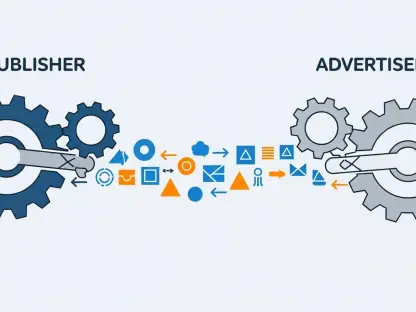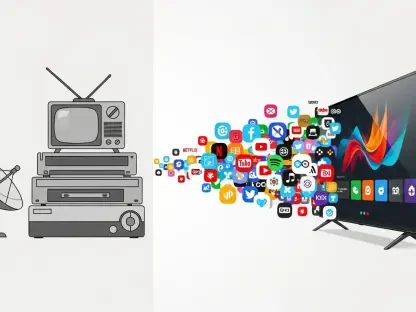As the world edges towards the dawn of 6G technology, Europe stands at a critical juncture. With the technological landscape rapidly evolving, the European Union (EU) and its member states must strategically position themselves to lead the global 6G race. This article examines the potential for Europe to spearhead 6G development, the hurdles it must overcome, and the strategic moves required to secure its leadership.
The Promise of 6G
Defining the Future of Connectivity
6G is poised to offer unprecedented technological advancements that could revolutionize various sectors. Expected features include significantly faster speeds, the ability to connect more devices, and lower latency. These will be essential for the development of autonomous vehicles, smart cities, and advanced manufacturing, especially when combined with AI and quantum computing. The integration of 6G with these technologies will create an interconnected environment that fundamentally changes how people interact with the digital world.
The implications of 6G extend beyond simple technical enhancements. Its full realization will influence the way businesses operate, enabling more efficient production processes and smarter logistics solutions. It could bolster healthcare with real-time data analytics and remote surgery capabilities. Additionally, innovations spurred by 6G may lead to new sectors being born, driven by the ability to execute complex computations instantly and connect billions of devices seamlessly.
Europe’s Opportunity
The EU, especially the Nordic region, has a competitive edge in telecommunications, with major players like Ericsson and Nokia leading the charge. Leveraging this strength, Europe has a unique opportunity to set the standards for 6G technology and benefit from a swift rollout. However, this requires a coordinated and rapid strategy that contrasts with the slower, fragmented rollout of 5G across Europe. Ensuring a consistent and unified approach will be crucial to harnessing the momentum generated by these telecommunications giants.
Europe’s existing infrastructure and intellectual capital provide a strong foundation for developing 6G. Investment in research and development can further solidify its position. Establishing clear guidelines and standards early on will help shape the global framework for 6G implementation. Moreover, Europe’s role in shaping the cybersecurity landscape will be pivotal in maintaining secure communication networks, critical for the digital age’s demands.
Strategic Coordination
A United Front with the US
One scenario envisions the EU and the US forming a united front, collaborating on network security and industrial policy. This partnership could see US tech giants like Elon Musk’s satellite network being integrated into future systems, positioning Europe as a pivotal partner to the US in technology. Together, these regions could pool resources and expertise to build robust and secure connectivity frameworks, benefiting global telecommunications.
However, forming this united front requires overcoming significant hurdles. Both regions must navigate differing regulatory landscapes and institutional priorities. The coordination on cybersecurity standards and the management of cross-border data flow need to be carefully crafted. Furthermore, integrating diverse technological ecosystems demands extensive collaboration, ensuring both regions can leverage their strengths without compromising their sovereign interests.
Rising Geopolitical Tensions
Current geopolitical realities present challenges to this collaboration. The EU and the Biden administration had aimed for closer ties through initiatives like the Trade and Technology Council, but views have since diverged. European states are also wary of the vulnerabilities posed by heavy reliance on US tech infrastructure. The geopolitical landscape has shifted, making it difficult for both parties to align their interests fully, thus complicating the prospects for collaborative advancements in 6G technology.
Tensions between global powers have placed Europe in a precarious position. The need to balance diplomatic relations with technological independence is increasingly pressing. Europe’s strategy must account for these geopolitical complexities by fostering resilience within its tech ecosystems and diversifying partnerships. This dual approach can mitigate the risk of dependency on any single entity while promoting collaborative innovation.
Achieving Tech Sovereignty
Internal Cohesion and Self-Reliance
Alternatively, the EU could focus on internal cohesion, nurturing tech sovereignty by investing in local capabilities and protecting key industries from external takeovers. Initiatives like Eurostack highlight Europe’s growing unity and self-reliance, fostering a future where Europe can independently lead in 6G technology. By fortifying its own technological infrastructure, Europe can drive innovation internally, reducing reliance on foreign entities and maintaining strategic autonomy.
Enhancing tech sovereignty entails robust policy frameworks that encourage homegrown innovation. Supporting startups and established companies through grants and favorable regulations can stimulate the technological ecosystem. Collaboration within the EU can further reinforce this approach; sharing expertise and resources can accelerate development cycles and ensure high standards across the board.
Risks of Fragmentation
A less favorable scenario involves the EU failing to maintain unity, resulting in internal competition. In such a fragmented landscape, European countries might become susceptible to dependencies on either China or the US, undermining the prospects of a strong, unified market for 6G. Fragmentation would dilute efforts to establish cohesive standards and hinder collaborative R&D initiatives, ultimately weakening Europe’s position in the global tech arena.
To circumvent these risks, the EU must prioritize cohesion and collective action. Facilitating cooperative projects and establishing inter-country partnerships will be key. Mechanisms that address and resolve regional discrepancies can help maintain unity. By fostering an inclusive environment, Europe can bolster its resilience against external pressures, ensuring a consistent path to 6G leadership.
Geopolitical Navigation
Sweden’s Economic Security Perspective
For Sweden, considering 6G from an economic security standpoint is crucial. As American tech giants dominate connectivity, Sweden must proactively address potential vulnerabilities and align strategically within the EU to gain advantages in the 6G landscape. Ensuring robust network security, resilient infrastructure, and strategic alliances will be central to Sweden’s approach, safeguarding economic interests amid the technological transition.
Sweden’s strategy must encompass a comprehensive risk management framework. Assessing dependencies and identifying critical areas for innovation will be vital. Moreover, fortifying its position within the EU through active participation in policy-making can leverage broader support and ensure that Sweden remains at the forefront of the tech revolution. This proactive stance maximizes the opportunities presented by 6G while mitigating associated risks.
Regional Coordination in the Nordics
Even if a broader EU consensus proves elusive, the Nordic region could still coordinate effectively. With shared technological and political culture, Nordic countries have the opportunity to align closely on rollout timelines and build a strong regional position in the 6G domain. Cooperation within the Nordics, characterized by mutual trust and similar innovation ecosystems, can drive a focused and efficient rollout of 6G technology.
The Nordic countries’ collaboration can serve as a model for regional coordination. By leveraging their collective expertise and resources, they can accelerate the deployment of 6G technologies. Establishing joint research facilities and unified standards will optimize development efforts. This approach ensures the region remains competitive and resilient, paving the way for broader European coordination in the tech landscape.
Integration of Technology and Defense
Unified Defense and Technology Strategy
The report underscores the need for a unified EU strategy on 6G, reflecting the increasing connectivity and potential security vulnerabilities. Europe’s strength in telecommunications is a critical asset in both civilian and defense sectors, necessitating seamless integration of technology development with defense policies. A coherent approach will bolster Europe’s defense capabilities, ensuring technological advancements contribute to overall security.
This integration involves aligning defense initiatives with tech advancements, fostering innovation that serves dual purposes. Collaborative efforts between defense and technology sectors will enable the development of secure communication networks, vital for both military and civilian applications. Establishing strong cybersecurity protocols and resilient infrastructure will be essential to safeguard these advancements.
Strategic Imperative for Leadership
Europe’s bid for 6G leadership is not just feasible but strategically imperative. Rapid rollout, standardization, and investment in indigenous capacities will be crucial. By coupling technology leadership with defense strategies, Europe can enhance its geopolitical standing and security, effectively navigating the future of 6G technology. This approach ensures a balanced progression, integrating technological innovation with strategic imperatives.
The strategic imperative for Europe involves fostering a comprehensive approach that encompasses policy support, investment in R&D, and international cooperation. Establishing clear priorities and actionable plans will guide Europe’s trajectory in the 6G era. By aligning these efforts with defense strategies, Europe can create a robust framework that not only leads technologically but also maintains geopolitical stability.
Path to Leadership
As the world approaches the dawn of 6G technology, Europe finds itself at a significant crossroads. With rapid advancements transforming the technological landscape, the European Union (EU) and its member countries need to strategically position themselves to lead the global 6G race. This article delves into the potential for Europe to take the lead in 6G development, the challenges it must tackle, and the crucial strategies needed to secure its leadership role.
In order to establish a leadership position in 6G, Europe needs to invest heavily in research and development, foster collaboration among its member states, and form strategic alliances with other global tech leaders. Additionally, addressing regulatory and standardization issues will be imperative to ensure the seamless deployment of 6G technology. By focusing on these areas, Europe can potentially emerge as a dominant force in the next generation of wireless communication, driving innovation and setting benchmarks for the world to follow.









